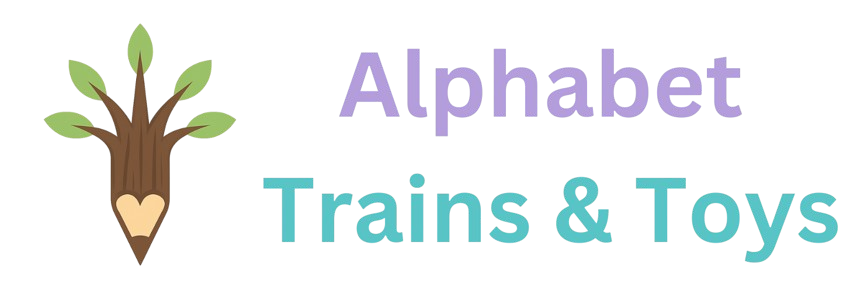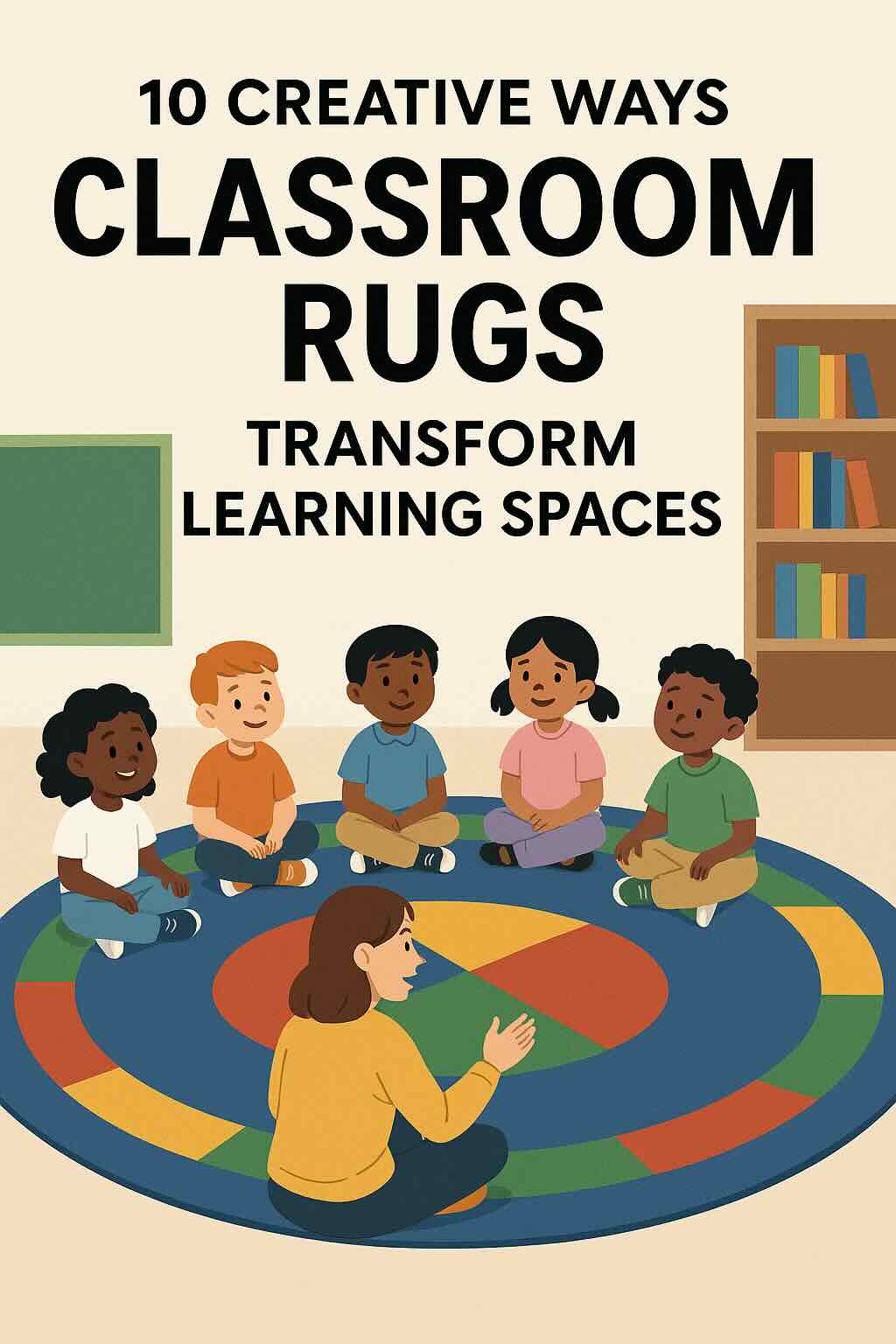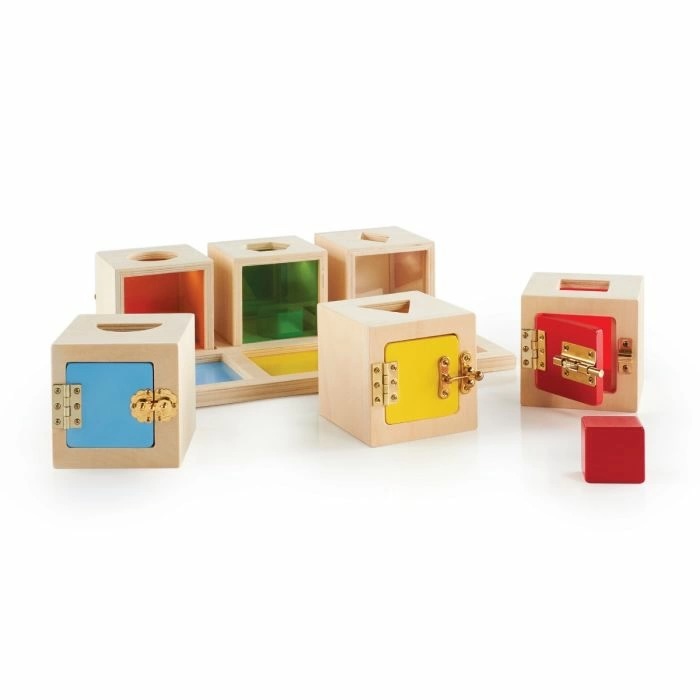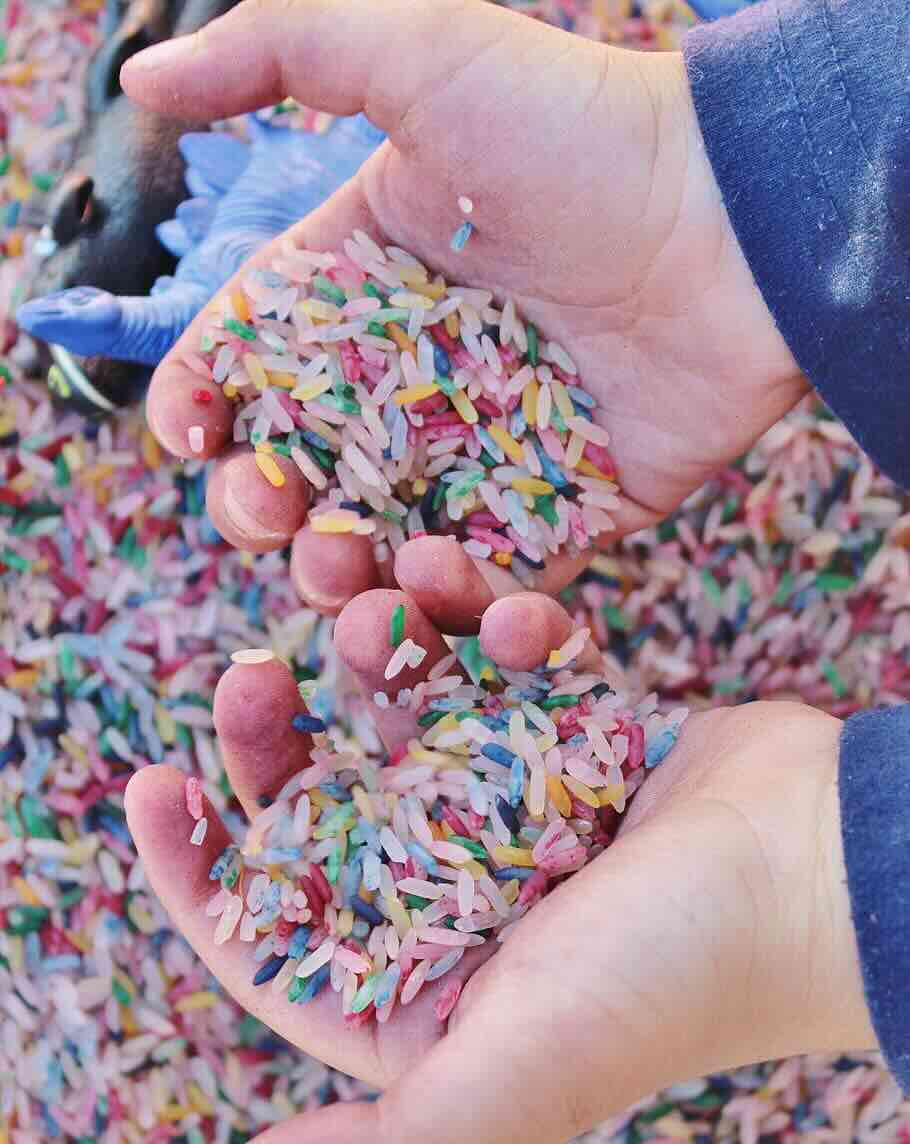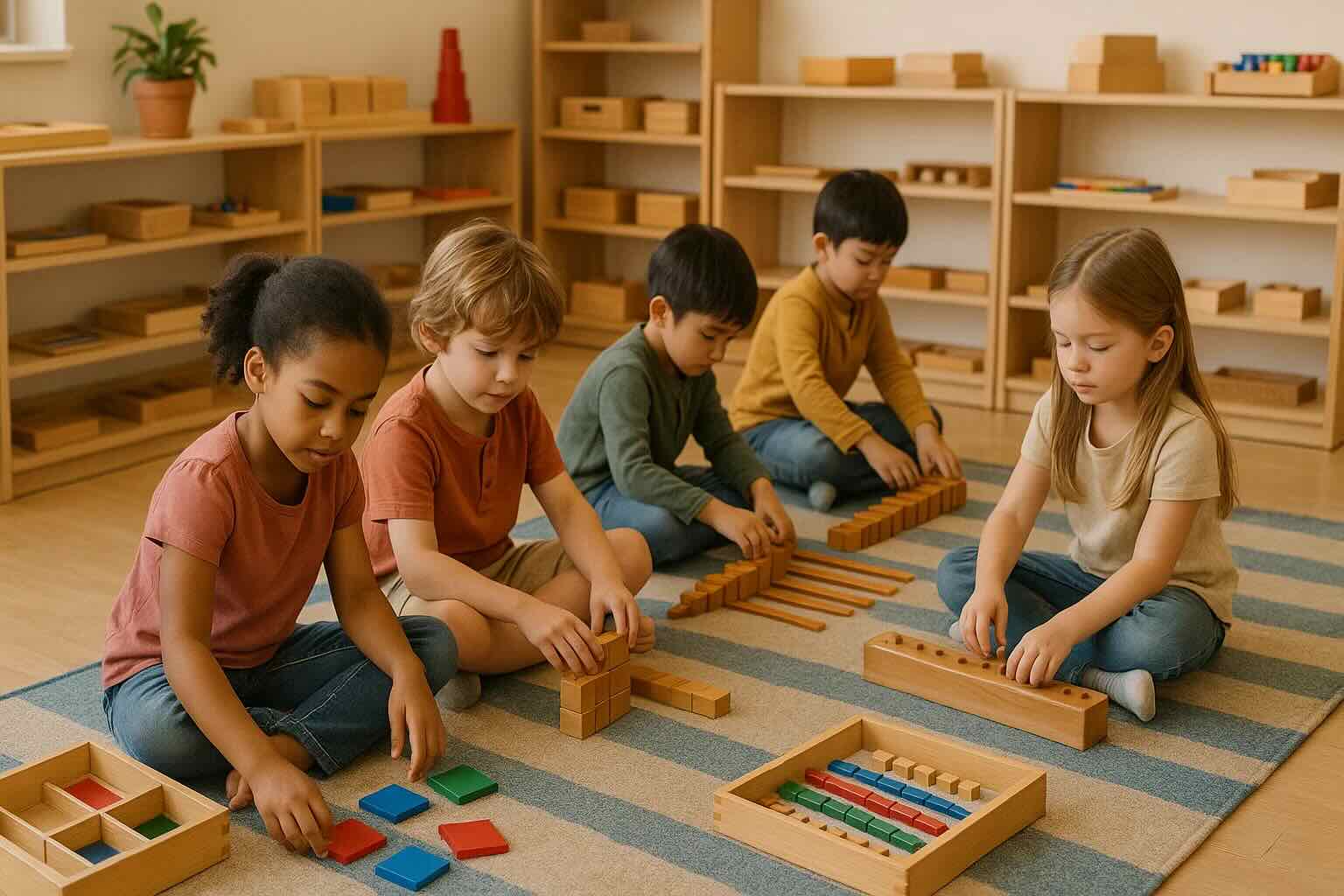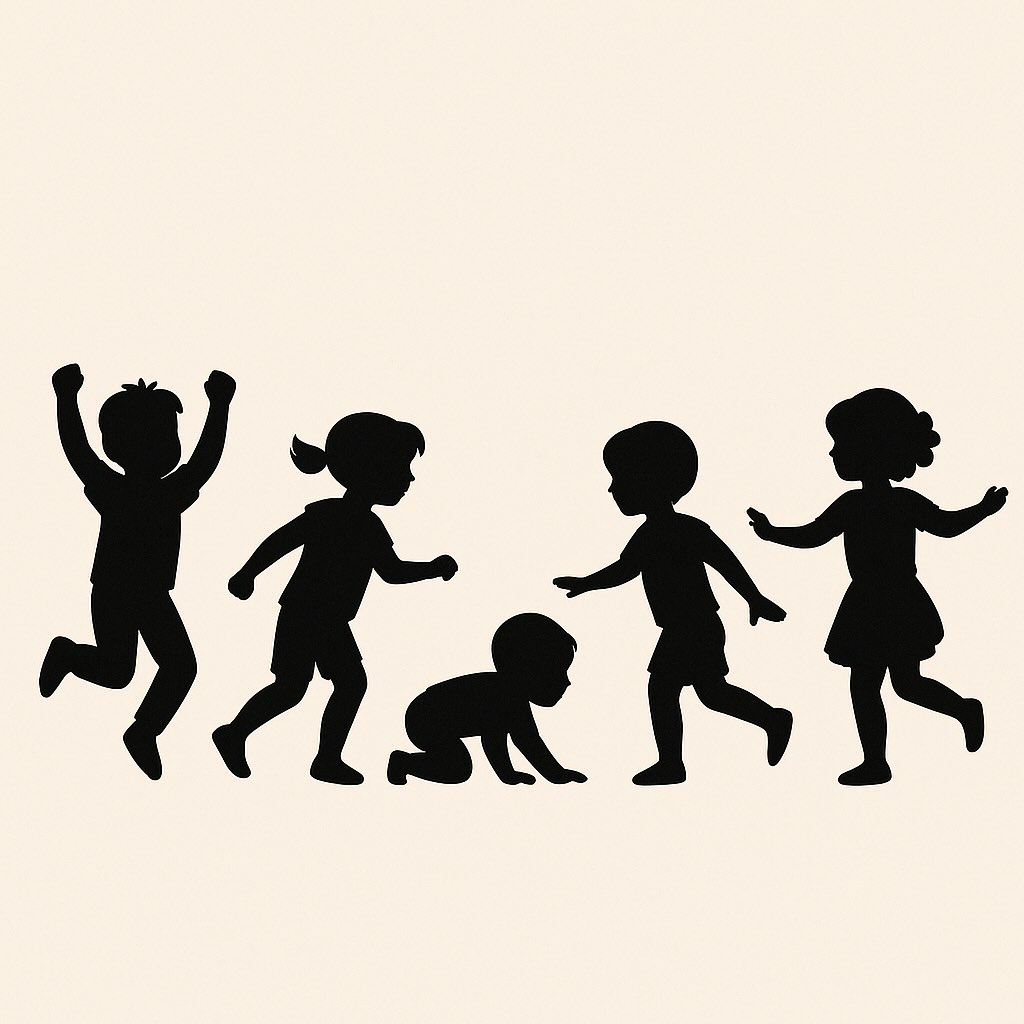Classroom rugs do much more than make a room look cozy. Used intentionally, a classroom carpet becomes a powerful teaching tool—supporting daily routines, student movement, social-emotional learning, and creating calmer learning environments in both traditional and modern elementary classrooms.
Below are ten creative ways to use a classroom rug (also called an educational rug, classroom carpet, or circle time rug) to transform learning spaces at school or at home. These evidence-based classroom management strategies require minimal prep while maximizing student engagement and learning outcomes.
1) Circle Time That Actually Works
A circle time rug creates a predictable gathering place that supports classroom community building and social skill development. Visual boundaries help elementary students settle faster, maintain eye contact, and read social cues—essential components for successful morning meetings and group discussions in today's diverse classrooms.
- Try: morning greetings in a circle, transition song cues, quick "turn-and-talk" pairs for peer interaction.
- Tip: keep transitions consistent (use a chime or specific song) so the rug signals "we're together now" and supports classroom routine establishment. Provide a non-audio cue (e.g., raised hand signal) as an accessible alternative.
- Research insight: Consistent, clearly defined gathering spaces can significantly reduce transition time and increase on-task behavior.
2) Built-In Boundaries for Learning Zones
Use the rug edge to define learning centers and classroom stations: reading corners, makerspace areas, and social-emotional learning zones. The educational carpet becomes a soft "room divider" without physical walls, supporting flexible classroom design and differentiated instruction in modern learning environments.
- Try: tape a subtle grid on the rug's edge to indicate station areas for small group rotations.
- Teacher win: smoother traffic flow, fewer "Where do I go?" questions, and improved classroom management.
- Bonus: helps some students—including those with autism or ADHD—understand spatial boundaries and transitions between activities.
💡 Quick Win: Name the space meaningfully. "Meet me on the Discovery Rug" or the Community Circle. A named place becomes a routine anchor that students remember and builds classroom culture over time.
3) Movement & Brain Breaks on the Rug
Short, structured movement activities boost self-regulation and attention span in elementary learners. The classroom rug offers a safe, soft surface for quick brain breaks that support sensory needs and kinesthetic learning styles—particularly beneficial for students who struggle with traditional desk-based instruction.
- Try: 30-second stretches, yoga poses, balance challenges, mindful walking around the carpet border.
- Math bonus: count reps, steps, or seconds aloud to reinforce numeracy skills and number sense.
- SEL connection: use movement to practice emotional regulation techniques and body awareness.
4) Patterns, Colors, and Shapes—A Visual Teaching Tool
Geometric borders, color blocks, and patterns on educational carpets become instant math manipulatives and visual learning supports. These built-in teaching aids support hands-on learning and spatial reasoning development without requiring additional classroom materials or storage space.
- Try: "Stand on a triangle," "Find two blue squares," "Make an AB pattern with your bodies around the circle."
- Language development: build precise vocabulary (corner, edge, center, diagonal, perimeter) through movement activities.
- STEM integration: explore symmetry, tessellations, and geometric relationships using the rug's design elements.
5) Calm-Down Corners That Students Actually Use
A designated small rug signals an inviting, contained social-emotional learning space—not a punishment zone. This proactive approach to classroom behavior management helps students develop self-regulation skills and emotional intelligence in a supportive environment designed for success.
- Try: 3-2-1 breathing exercises seated on the rug; tactile fidgets in a nearby basket; visual emotion charts at eye level.
- Setup tip: include a sand timer, feelings identification chart, and a "return to learning" checklist for independence.
- Teacher support: teach the routine explicitly during calm moments, not during emotional crises.
😊 SEL Mini-Routine: "Feet on the rug. Hands on belly. Breathe in for 3… breathe out for 3… Name the feeling you're having. Choose your next helpful step." Practice this sequence daily during non-stressful times to build muscle memory.
6) Storytelling & Drama Right on the Floor
Educational rugs anchor dramatic play, oral language development, and creative expression activities. The carpet border becomes a "stage" boundary while the center transforms into a "town square" or story setting, supporting literacy development through movement and imaginative play.
- Try: retell familiar stories with students placed as characters around the rug; rotate speaking parts to build confidence and public speaking skills.
- Extension: use props from classroom dramatic play centers to enhance storytelling and vocabulary development.
- Cross-curricular: act out historical events, scientific processes, or mathematical word problems for deeper understanding.
7) Floor-Based Literacy & Phonics
Transform phonics instruction by using letter cards, syllable stepping, and word family activities mapped to different rug zones. This kinesthetic approach to reading instruction lowers barriers for emerging readers and supports multi-sensory learning preferences in diverse classrooms.
- Try: hop to the onset, jump to the rime; blend sounds as you land on different carpet squares.
- Sight words: place high-frequency words around the rug perimeter; students walk, spell, and read aloud.
- Differentiation: use the same activity with different word complexity levels to support all readers simultaneously.
8) Math You Can Stand On
Transform the classroom carpet into a living number line, coordinate plane, or array for hands-on mathematics instruction. This approach supports conceptual understanding, makes abstract math concepts concrete, and accommodates different learning styles in elementary math education.
- Try: skip-counting steps around the perimeter, human bar graphs using carpet rows, perimeter and area exploration walks.
- Differentiation strategies: assign varied roles (counters, checkers, problem-solvers, explainers) to include learners at different mathematical levels.
- Problem-solving: use the rug space for acting out word problems and making math thinking visible to peers.
9) Inclusion & Classroom Community
Educational rugs create equitable access to learning where every student can see, hear, and feel they belong. Visual spots and clear boundaries reduce anxiety for students who benefit from predictable structure, supporting diverse learning needs in inclusive classroom environments.
- Try: assign optional "home spots" only as supports, never as fixed seating arrangements that limit student choice.
- Universal Design: offer seating alternatives (cushions, standing spots, wiggle seats) at the rug's edge for different physical needs.
- Community building: rotate special jobs and leadership roles to ensure all students feel valued and included.
10) Mindfulness, Rest, and Reflection
Quiet read-alouds, guided imagery, and reflective journaling activities feel safer and more focused on the soft, defined space of a classroom rug. This dedicated mindfulness area supports social-emotional learning and helps students develop crucial self-awareness and coping skills for academic and life success.
- Try: "Sound hunt" mindfulness: listen for far, medium, and near sounds for 30 seconds, then share observations to build listening skills.
- Reflection prompts: end-of-day gratitude sharing, goal-setting conversations, or peer appreciation circles.
- Calming routine: use soft music, dimmed lights, and guided breathing to create a restorative learning environment.
✅ Implementation Template: Choose one specific rug routine to anchor your classroom management (circle time, calm corner, or math movement). Write a detailed 2–3 minute script including student expectations and teacher language. Practice consistently for 10 school days, then gradually add your second use case. Track student engagement and adjust as needed.
Related reads: Educational Rugs for Classrooms
For more research on classroom environment impact: Edutopia's Classroom Design Research
Classroom Rug FAQs
What size classroom rug works best for circle time?
For 20–24 elementary students, most teachers prefer rugs sized 6'×9' to 8'×12' depending on their classroom layout and available floor space. The key factors are ensuring everyone fits comfortably inside the visual boundary with clear sightlines to the teacher and peers, while leaving enough room for students to sit crisscross or in their preferred position. Consider your specific needs: smaller rugs (4'×6') work well for guided reading groups or calm-down corners, while larger rugs accommodate whole-class activities and movement-based learning.
How can I use a classroom carpet for behavior management and daily routines?
Make the rug a predictable anchor in your classroom management system by establishing consistent entry and exit cues, such as a specific song or chime that signals gathering time. Create visual "home spots" using tape or carpet squares for students who need additional structure, but always offer these as supportive choices rather than assigned seating. Keep rug routines brief (5–15 minutes), practice expectations during calm moments, and use positive reinforcement when students follow procedures. Many teachers find that naming their rug space (like "Community Circle" or "Learning Hub") helps students mentally prepare for the expectations of that area.
What are some no-prep activities I can do with my classroom rug?
Many effective rug activities require zero additional materials or setup time. Try pattern recognition games using the rug's design ("find all the blue shapes"), perimeter walks for counting or skip-counting practice, 30-second movement breaks like stretching or yoga poses, feelings check-ins where students share emotions using simple hand signals, and turn-and-talk partner activities where students discuss a question with their neighbor. Other popular no-prep options include storytelling where students take turns adding to a collaborative story, human graphs where students sort themselves by preferences, and mindfulness activities like listening for different environmental sounds.
How do I keep rug time inclusive for all learners?
Successful inclusive rug time starts with offering multiple participation options: some students may prefer sitting in a chair at the edge, using a cushion or wiggle seat, or standing quietly behind the group. Use clear visual supports like picture schedules or hand signals to help all students understand expectations, and rotate speaking and leadership roles so every child has opportunities to participate without pressure. For students with sensory needs, consider the rug's texture, nearby lighting, and sound levels. Most importantly, establish rug time as a positive, predictable experience by maintaining consistent routines, using encouraging language, and celebrating different ways students can contribute to the learning community.
📖 Quick Acronym Guide:
- SEL – Social-Emotional Learning (skills like self-awareness, self-regulation, empathy, decision-making, relationship building).
- ELD – English Language Development (support for multilingual/English learner students). Sometimes written as EDL in certain districts.
- UDL – Universal Design for Learning (teaching framework that provides multiple ways to engage, represent, and express learning for all students).
- MTSS – Multi-Tiered System of Supports (layered academic & behavioral interventions matched to student needs).
- IEP – Individualized Education Program (custom learning plan for students receiving special education services).
